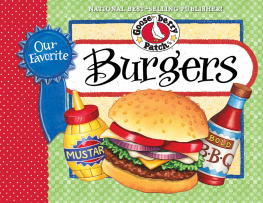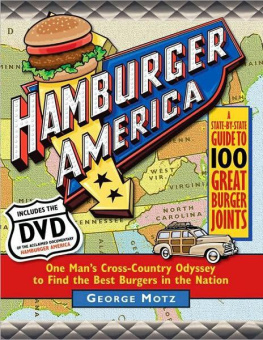GENESIS In 2010, in Santa Monica, California, I met the hamburger that was to change my life: it tasted unlike any hamburger I had ever eaten before. I realised that day that with good bread, good meat and good vegetables, the possibilities were endless. Since then, at Blend, I've spent my time dreaming up recipes for gourmet hamburgers. We take inspiration from every cuisine, always on a quest for innovation. The hamburger is effectively an invitation to cook and to take pleasure in eating, not to mention the sense of conviviality it inspirespeople feel good around a good hamburger. It brings people together, brings them closer.
What I also like is its humility: whether it contains ordinary minced beef or the latest recipe from a great chef, the hamburger stays in its place, snug and warm between two slices of bun, and can be enjoyed by everyone. The hamburger has this distinctive feature: it is almost as much fun to make as it is to eat. In the preparatory stage, we turned our attention to the search for the perfect blend that gives the gourmet hamburger its special quality. A blend is a mixture, a fusion of qualities. It consists of selecting different cuts of beef for their quality and advantages, and combining them to achieve an optimum balance of texture and taste. I then happily crossed paths with Yves-Marie le Bourdonneca butcher in love with his trade, as passionate about meat as I can be about hamburgers.
Together, thanks to his expertise and know-how, and after countless experiments, we finally found our blend. Once this is achieved, any variation is possible. Welcome to Blend. We wish you a great deal of pleasure making our gourmet hamburgers. Dont hesitate to make our recipes your own. 1/ It is not said often enough, but none of this would have happened if, at the beginning of the nineteenth century, a certain Karl Drais had not invented the meat mincer. 1/ It is not said often enough, but none of this would have happened if, at the beginning of the nineteenth century, a certain Karl Drais had not invented the meat mincer.
Some claim that the hamburger was born in Texas in 1880, originating with Fletcher Davis. Or else it might have been the Menches Brothers of Hamburg, New York, who allegedly invented it around 1885. The same year, in Wisconsin, a little 15-year-old genius by the name of Charlie Nagreen had the wonderful idea of putting his meatballs between two slices of bread, to increase his sales. For others, it comes from New Haven, and we owe it to Louis Lassen in Connecticut, the restaurant Louis Lunch still proudly displays today the information that, in 1900, the manager at the time had the brilliant idea of putting boiled beef between two slices of bread to satisfy a customer who wanted to eat on the run! Finally, in 1916, there is evidence of a certain hamburger sold by Walter Anderson in Wichita, Kansas. While historians recognise that the invention of a popular dish cant come down to a particular individual, what is certain is that the earliest forms of hamburger were slices of traditional bread and sliced or chopped meat. 2/ The minced meat patty between two slices of bread appeared at the end of the nineteenth century or beginning of the twentieth century.
It was only a little later, still in the United States, when they realised the patty had to be seared at a high temperature to make it crusty and that a round bun was more convenient for eating in the hands without making a mess, that the hamburger was really born: a meat patty between the two halves of a round bun. 3/ The first hamburger chains soon saw the light of day: White Castle in Wichita, Kansas, Big Boy in Glendale, California, and then McDonalds in San Bernardino, California. We have reached about the 1940s. 4/ The rise of the hamburger was at first considerable in the United States, where every state and every city had its own speciality, its own hamburger recipe. Then, up to the 2000s, the hamburger went international. 5/ In the early 2000s, the hamburger underwent a significant new development: chefs finally became interested in it. 5/ In the early 2000s, the hamburger underwent a significant new development: chefs finally became interested in it.
Daniel Boulud, a French chef based in New York, became the figurehead of this trend by putting on his restaurant menu a foie gras hamburger for $29. This new fine-dining approach went international and chefs around the world started to consider the hamburger with a great deal of attention. 6/ In California, after almost a decade, we have witnessed the birth of two new categories of hamburger. On the one hand, the chefs' hamburgers, rebaptised gourmet hamburgers by the food critics. These are distinguished from traditional hamburgers by their sophisticated ingredients and refined recipes.
EQUIPMENT COOKING THE PATTY Patties have to be cooked on a surface at a very high temperature: the meat needs to be seared so the patties arent damaged during cooking and to produce the Maillard reaction (named after its inventor)at high temperatures the whole surface of the patty in contact with the heat source browns and forms a crust due to a chemical reaction between the sugars and amino acids, which adds a great deal of flavour and a unique taste to the meat.
EQUIPMENT COOKING THE PATTY Patties have to be cooked on a surface at a very high temperature: the meat needs to be seared so the patties arent damaged during cooking and to produce the Maillard reaction (named after its inventor)at high temperatures the whole surface of the patty in contact with the heat source browns and forms a crust due to a chemical reaction between the sugars and amino acids, which adds a great deal of flavour and a unique taste to the meat.
You then, ideally, assemble the hamburger on the cooking area so the hamburger can be served hot. To do this, when you reach the point of turning the patties, put the heel and crown of the bun on the cooking area, cut side up, and carry out the assembly of the burger on the heat source.
HOTPLATE A historical element in the cooking of hamburgers, the hotplate is ideal. Able to reach a very high temperature, it sears food and therefore needs very little fat. You can cook everything on it: sear the patties on one side of the plate, toast the buns and assemble on the other. Usually you can set the thermostat differently depending on the cooking area used.
While they are most often found in the garden, there are also hotplates that can be built into the kitchen work surface. An investment youll never regret GRILL Grilling (broiling) over heat has a special place in the history of the hamburger, because it gives a particular flavour to the meat: slightly smoky. Hamburgers produced on a grill earn the prestigious description of being charbroiled, which some American chains highlight in their logo. Not as even as the hotplate and only to be used fo meat, you can also assemble the hamburgers on it if it is large enough.


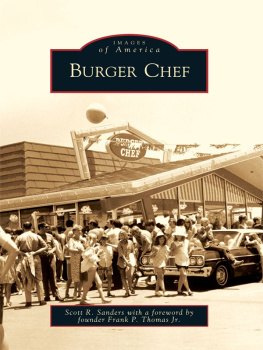

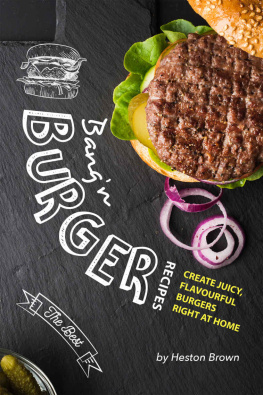
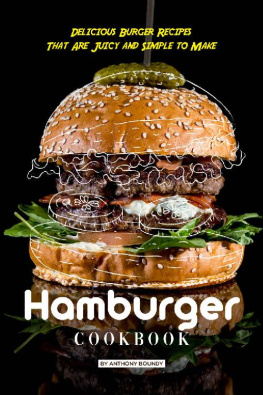
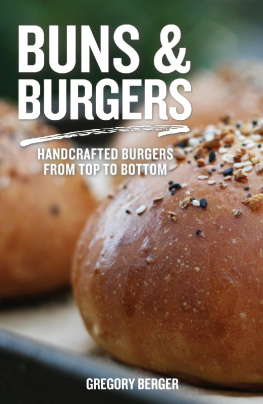
![Graham Bourdain - Top 30 Most Delicious Burger Recipes: A Burger Cookbook with Lamb, Chicken and Turkey - [Books on Burgers, Sandwiches, Burritos, Tortillas and Tacos] ... 30 Most Delicious Recipes Book 2) (Volume 2)](/uploads/posts/book/113359/thumbs/graham-bourdain-top-30-most-delicious-burger.jpg)
